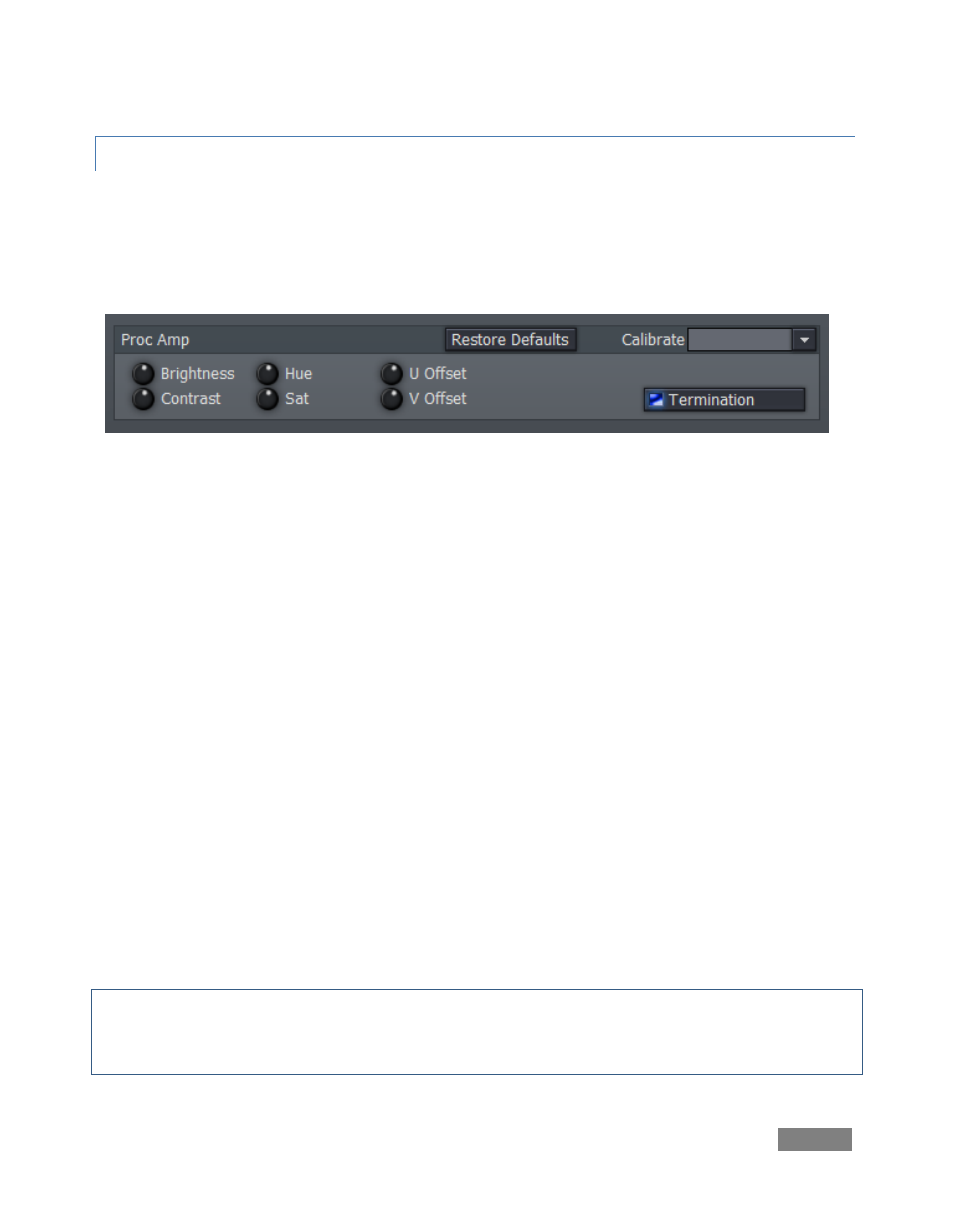Proc amp – NewTek TriCaster Studio User Manual
Page 93

Page | 73
6.6.3 PROC AMP
Each camera can be selected in turn, and each has full Proc Amp (processing amplifier) controls,
to make your image look its best. After selecting a specific Input, you can then refine how the
camera looks on screen. (The Proc Amp can also help you to balance the signal from dissimilar
cameras so they match reasonably well.)
Figure 70
There are four basic adjustments in TriCaster – Brightness, Contrast, Hue and Saturation.
The first two controls (Brightness and Contrast) are familiar to all of us, and really need no
explanation. Hue adjusts the master color of the video signal from the attached source, swinging
the entire image through the color wheel’s spectrum.
Saturation controls the intensity of color in the image. Zero saturation produces a black and
white picture; increased saturation results in richer colors. However the nature of video display
and standards is such that over-saturation can quickly result in ‘illegal’ video signal values.
Illegal levels manifest themselves in all sorts of nasty ways, including smearing and ‘crawling
‘colors, and even audio issues – so be conservative when raising Saturation. (Your TriCaster
system provides Waveform\Vectorscope monitors, an invaluable way to accurately monitor the
video signal to avoid this sort of issue.)
All control knobs decrease value when you drag the mouse to the left over them (holding down
the left button) and increase when you drag to the right. Double-click a knob to restore the
default setting for that one parameter. Clicking Restore Defaults clears all of your adjustments,
resetting the currently selected input to factory default values.
Hint: Control knobs in TriCaster have a defined response to mouse movement, but very fine
adjustments can be made by holding down the Ctrl key while turning a knob. Rotation of the knob
relative to mouse movement is then reduced by a factor of ten, allowing much greater precision.
